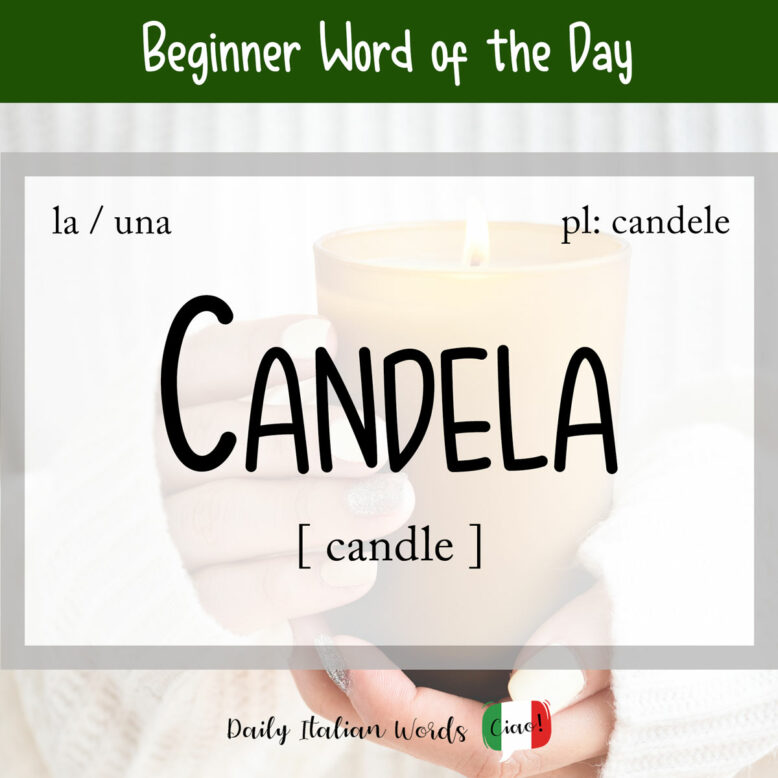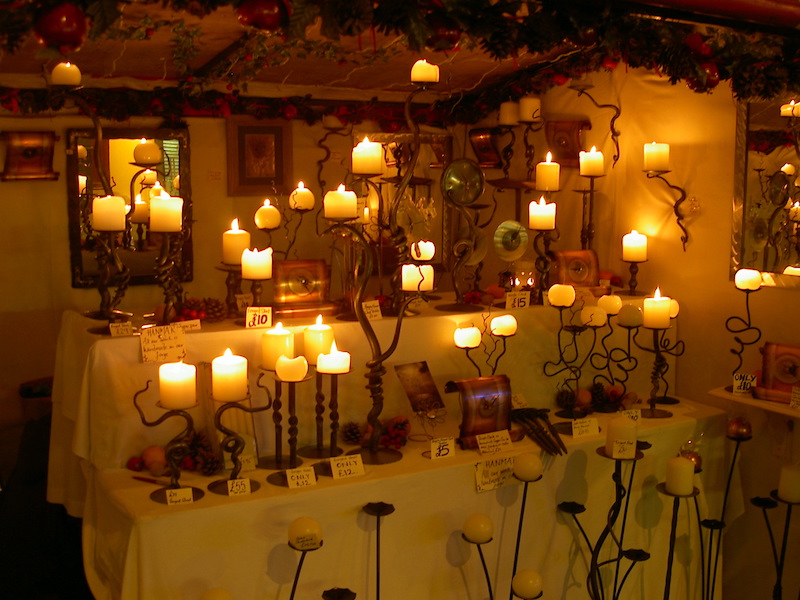One of the most important Christmas symbols in Italy and across Europe is the candle – or candela (feminine, plural: candele) in Italian – as it is said to represent the light of Jesus Christ.

Candles can be found everywhere at this time of the year: on trees as decorations, inside churches during religious ceremonies and in the hands of carollers.
Ho acceso la candela ma si è spenta subito.
I lit the candle but it immediately went out.

In fact, a candle used during church ceremonies has its own special name in Italian: cero. It is a larger-than-average candle reserved for public worship.
Other kinds of candles include the candela profumata (scented candle) and the candela di cera (wax candle).
Candlelight translates as lume di candela in Italian and by candlelight would be a lume di candela.
The use of the word candela doesn’t stop here. In a car engine, the candela is the name given to the spark plug. There is the posizione a candela in gymnastics (candlestick position) and the noun candela (cd) is the base unit of luminous intensity in the International System of Units (SI).
Idioms featuring the word ‘candela’
There are a couple of important idioms in Italian with candela in them. Both are worth remembering as they are used quite frequently.
Il gioco non vale la candela
Literal translation: The game isn’t worth the candle.
English meaning: It’s not worth the trouble.
Tenere / Reggere la candela
Literal translation: to hold / bear the candle
English meaning: to be the third wheel in a relationship
Heather Broster is a graduate with honours in linguistics from the University of Western Ontario. She is an aspiring polyglot, proficient in English and Italian, as well as Japanese, Welsh, and French to varying degrees of fluency. Originally from Toronto, Heather has resided in various countries, notably Italy for a period of six years. Her primary focus lies in the fields of language acquisition, education, and bilingual instruction.


